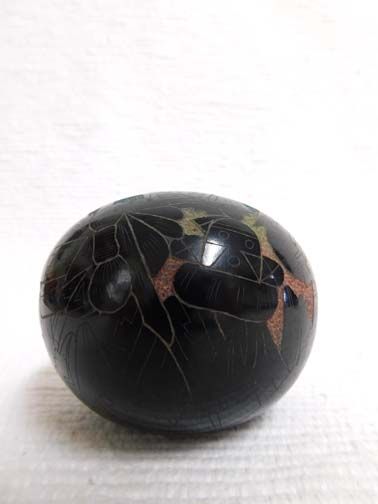Native American Acoma/Hopi Handbuilt and Handetched Seed Pot
Description
Native American Acoma/Hopi Handbuilt and Handetched Seed Pot by Dalawepi (dec.)
Ergil F. Vallo, Sr. (1959-2005) signed his pottery "Dalawepi," which means "color of the rainbow." He was half Acoma and half Hopi. Ergil was 21 years old when he began creating these unique pieces. He was inspired to continue the family tradition of creating pottery by watching many of his family members. Ergil specialized in incised black pottery. Dalawepi would shape the piece, then use pigments on the clay. The black is from firing the gray clay over and over again and polishing the piece between firings. It is the oxygen that is let into the hot firing process that creates the blackened surface of the clay. The piece is then etched, revealing the colors beneath the surface. He used natural pollens and minerals to get the contrast in the brilliant colors on his designs which include Hopi Katsinam, Mimbres animals, kiva steps and geometric designs. In the fall the women would take the seeds for next Spring and place them in these pots and then stack them. These pots would be placed in the corner of their home, stacked so the bottom of one pot would seal the top of the other. This storage technique would save space and keep the rodents from ruining next years' seed crop. This wonderful piece is interesting: the longer you look at it...the more you see. There are three Mudheads and three Katsina Manas as well as animals etched into the surface of this Native American seed pot.
3 in. tall x 3.5 in. dia.
Dalawepi--2874

